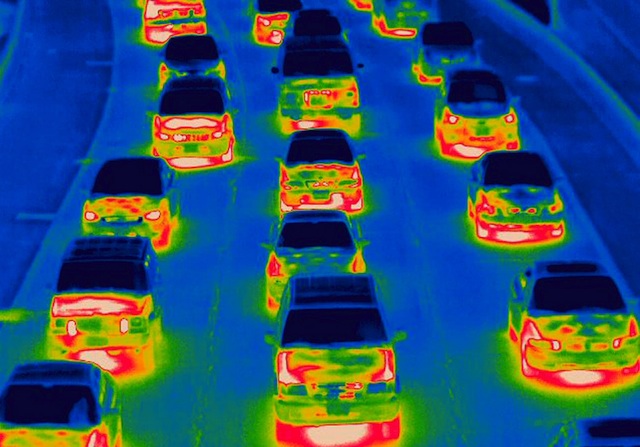
Technology that has widely been used by the US military in combat is now helping Ford make the interiors of its cars more energy-efficient and quieter.
The carmaker says its engineers are using thermal imaging to zero in on areas of the vehicle that may be leaking air from the cabin.
The technology enables it to target ways to cut wind noise in transit and energy loss in the vehicle’s heating and cooling systems, it says.
A report in Automotive News Europe says Ford claims it is first in the industry to use the technology for that purpose.
To test for air leaks, engineers heat the air inside the vehicle’s cabin and then record thermal images, looking for areas where warm air may be escaping.
They say that sunroofs, windows, doors, the base of the windscreen and the boot area are the most common sources of leaks.
In the past, engineers filled cars with smoke, looking for haze outside of the vehicles.
They have even used specialised stethoscopes – similar to the devices doctors use to listen to a patient’s heart – to monitor air flow, a practice they still employ in addition to imaging.
Thermal imaging can find leaks more quickly, and help identify smaller leaks that other equipment may have missed, the company said.
Ford says an independent study showed the technology helped its 2013 US-market Fusion sedan earn a 67 per cent approval rating for interior quietness, compared with 58 per cent for the 2012 Toyota Camry sedan.
Thermal imaging isn’t entirely new to the motoring industry. Several brands have employed “night vision” safety devices that used thermal imaging to alert drivers to obstacles in front of or behind their vehicle, with mixed success.
